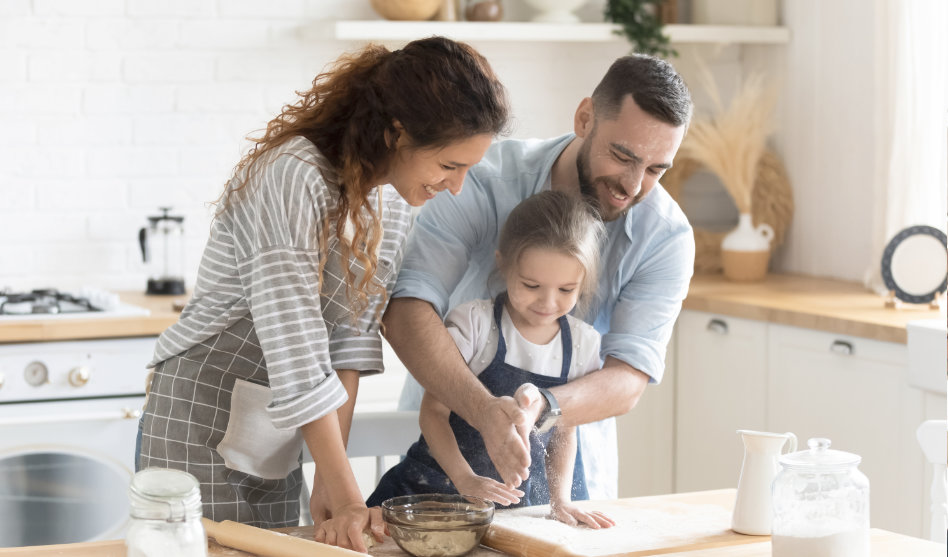The kitchen is at the heart of your home and your everyday life. You need it to be practical, aesthetically pleasing, and efficient so that you can get all the tasks done in an easy-to-use and stress-free environment.
Whether you are building a brand new home or designing your dream showhome kitchen from scratch, it’s important to think about every detail during the planning stage.
1. Define a budget for your dream showhome kitchen
There are many different factors to consider when you're budgeting for a kitchen renovation. To have a good idea of what your budget should be, you need to consider how much you can afford to spend on the project, as well as how long you want it to take.
Often, when people think about a kitchen upgrade, they think about new appliances or trendy finishes. However, when it comes to kitchen remodelling, it is always important to consider functionality before style.
Remember, a kitchen renovation should reduce the time you need to spend cooking. Quality appliances that help you save time and cut back on waste will make your kitchen more enjoyable.
Before you choose any furniture or finish for your showhome kitchen, you should take a thorough look at the current setup in your kitchen. What is being used and what works well together will influence the type of appliances and how it should be laid out.
You can then decide on the main appliances required, where services may need to be moved and how much of the budget will be remaining for the cabinets and any finishes. This will give you a good idea of what you can achieve within your particular budget.
2. Evaluate what appliances you'll need for your new kitchen
Appliances are the lifeblood of your kitchen. If you're moving from a small, cramped kitchen to one that's bigger, you'll probably need to buy some new equipment to make the most of your new space.
The more appliances you own, the more storage and space you will need to dedicate for these in your new showhome kitchen. The kitchen is the heart of your home, so you need to ensure you equip it with everything you need to run it effectively.
The more money you invest into kitchen equipment, the more you can save over the life of your kitchen. The worst thing that could happen is that you decide to buy a new appliance, get a low-capacity part, and run it far above its capacity to point that it needs replacing in the near future.
Another consideration while shopping for kitchen equipment is features and your particular requirements. A large freezer is a must for any home with young children. But a gas oven, meanwhile, can become dangerous if you have young children.
It’s also a good idea to know how much cleaning your new showhome kitchen will need, and plan for appliances that are easy to keep clean, or provide self-cleaning functions.
Before you commit to anything, you should know whether your home’s layout is compatible with the new kitchen equipment. Your kitchen layout may need to be completely overhauled if you plan to put in a larger sink or add a different type of oven in your kitchen.
It's a good idea to make sure your kitchen facilities are compatible with your desired layout before committing to anything.
3. Consider the design and layout of your new kitchen
It’s important to make a plan early on for how your kitchen will look once renovated. Start with the appliances chosen in the previous steps and use the dimensions of these to determine a suitable layout.
Begin by dividing your kitchen into 3 zones for cooking, food preparation and cleaning.
The cooking zone includes the oven, hob or range cooker, an extractor fan and microwave. These should all be located close by so that you can easily access each appliance during cooking.
The food prep zone includes countertop areas where you can easily prepare food, so should include easy access to the fridge, freezer and waste bins. Ensure you leave enough work space for setting down pans, dishing out meals and any additional counter-top appliances you might need to use on a regular basis.
Finally the cleaning zone is where your sink, dishwasher and majority of cabinets should be located so you can easily put dishes away once they have been cleaned.
4. Decide on flooring, cabinets, and countertops
The most important thing when it comes to flooring, cabinets, and countertops is to choose the ones that you like, rather than going with the cheapest option.
You’ll end up looking at them every single day and will likely regret the decision you make if you choose them based on price alone. Slightly more expensive units and materials will also stand the test of time better than cheaper alternatives.
You should consider whether your kitchen will look better fitted with a modern or traditional design. It is important to consider what the style of your new showhome kitchen will be based on the overall style of your home. By selecting a style in-keeping with the rest of your home, it will create a natural flow when moving from room to room.
Also consider the materials used and how each will stand up to everyday use. Solid wood worktops look great, but they are easily damaged by stains and hot pans, which could lower the overall finish of your new showhome kitchen in no time. Harder wearing materials like stone, laminate and painted cabinets are also easier to keep clean, to retain that showhome kitchen look.
Finally think about the materials used for the floor and walls. Tiles are easy to clean, but can feel cold under foot. Wood creates a more natural feel that can bring warmth to the room. Solid splash-backs also allow for easier cleaning and prevent dirt from building up in the grout lines between tiles.
5. Plan available space for equipment, seating, and storage
Once you have the desired layout and style for your new kitchen, you should take a final look at the available storage. It's easy to underestimate the amount required, but remember to account for everything including; crockery, glasses, pots, pans, countertop-appliances and dried/tinned food. You should then allocate additional storage for items you might add in future or might have just forgotten about.
Shelves and cabinets can be used to store so many things, from food items and kitchen utensils to cleaning supplies. A pull-out pantry or built-in wine rack is also a practical solution, with other kitchen cupboards or drawers able to keep everything else organised. Even a built-in spice rack or knife divider makes it easy to get the ingredients and tools you need with the minimum of hassle.
Also think about waste disposal including bins for general waste and recycling (glass, plastic, paper etc). If you're going to incorporate a seating area then ensure there is sufficient space for everyone to get in and out easily, while still being able to access cupboards and appliances.
We hope the above tips help during the design of your new showhome kitchen. Planning your kitchen before you start doing anything else is vital to its success. By taking extra time in the planning stage, you can avoid costly changes further down the line.
If you have any other experience or helpful tips to share, please leave them in the comments below.




















